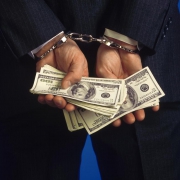Exemplary Ethical Recoveries
[This essay was originally posted on The Conflict of Interest Blog.]
F. Scott Fitzgerald famously said, “There are no second acts in American lives,” but in the C&E world the second act may count for more than the first – for better or worse.
Instances of the latter – tragic second acts – include various cases where a company engaged in criminal conduct but failed to either fully “come clean” when it was prosecuted or do what was necessary to prevent future violations. Prominent examples of this sort of failure go as far back as cases involving the first massive penalties under the Federal Sentencing Guidelines for Organizations – the $340 million fine against Daiwa Bank for banking-related offenses in 1996 and the $500 million against Hoffman-LaRoche for antitrust crimes in 1999 – and have occurred as recently as last month, when a $425 million criminal fine was imposed on Bridgestone for antitrust offenses in part because the Company had failed to disclose those offenses at the time of an earlier plea. (The logic of severe punishment for a company that fails a second time is fairly obvious, and, although he doubtless would have been mortified to be quoted in a compliance blog, is perhaps best expressed by these words of Oscar Wilde: “To lose one parent may be regarded as a misfortune; to lose both looks like carelessness.”)
But while the cases of failure such as these make the headlines, a second act need not be tragic. For the good news, we turn from law to psychology, and a just-published paper “Better than ever? Employee reactions to ethical failures in organizations, and the ethical recovery paradox” by Marshall Schminke, James Caldwell, Maureen L. Ambrose and Sean R. McMahon. In it, the authors review the results of a laboratory study and a field study showing “an ethical recovery paradox, in which exemplary organizational efforts to recover internally from ethical failure may enhance employee perceptions of the organization to a more positive level than if no ethical failure had occurred.”
These results are very encouraging even if, while perhaps paradoxical in the way the authors describe, they do not seem totally surprising. After all, a C&E failure can also be seen as presenting a test – and ethical standards at a company that have fared well on a test could seem more meaningful to employees than those that haven’t been tested at all. Of course, the same could be said of nearly any attribute of an organization – but it would be hard to find another area where the gap between what is proclaimed and what is practiced is as wide as, generally speaking, it is in the field of business ethics. So, there is every reason for much weight to be placed on the results of the sort of test that ethical failures offer.
Still, and beyond the important headline finding about the possibilities of ethical recovery, the paper should be useful to the C&E practitioners for a variety of reasons:
-
It has an extensive review of relevant literature, such as research showing that “ethics-based failures may have a more generalized impact [on employee perceptions of an organization] than other types of failures” – in part because of the strong negative emotions often triggered by the former. This information should be helpful for briefing directors and senior managers on the importance of strong C&E measures generally (i.e., not just in the wake of failures).
-
The authors note that the results “raise a host of possibilities for considering additional implications of ethical repair, those even further downstream from the unethical event.” I agree that this is an important area to explore. Indeed, a company I know that has succeeded as well as any in maintaining an exemplary corporate culture has done so in part by staying mindful of a scandal that had occurred literally decades earlier, i.e., very “downstream.” But, too many companies take the opposite approach – burying, rather than learning from, their failures.
-
The authors identify other implications for practitioners, including the need to have “systems, structures, processes, controls and policies…in place to stage a successful recovery in the event an ethical failure happens.” I agree with this as well, but note that perhaps more helpful than planning for true ethical crises is having systems for making the most of the small-scale ethics failures that occur on a routine basis – such as by publicizing the extent to which the company conducts rigorous investigations of employee reports of suspected C&E transgressions and imposes meaningful discipline for violations.
Indeed in this sense, exemplary ethical recovery should not be viewed as a once- (or twice) in-a-lifetime event for a company, but an active ingredient of its very culture.
Finally, note that the research did not look closely at the issue of what made an ethical recovery exemplary; rather, it was based broadly on reported degrees of satisfaction by the study’s subjects. “We know little about the attributes of an effective recovery,” the authors write. One hopes that other researchers (or perhaps even these ones) will build upon this study to develop knowledge in that key area.



